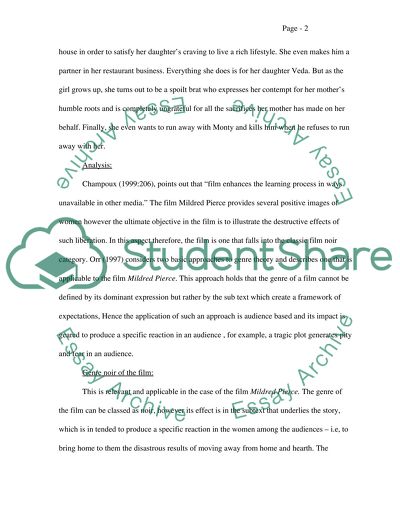Cite this document
(Film Analysis: Mildred Pierce Movie Review Example | Topics and Well Written Essays - 1500 words - 1, n.d.)
Film Analysis: Mildred Pierce Movie Review Example | Topics and Well Written Essays - 1500 words - 1. https://studentshare.org/visual-arts-film-studies/1538913-film-analysis
Film Analysis: Mildred Pierce Movie Review Example | Topics and Well Written Essays - 1500 words - 1. https://studentshare.org/visual-arts-film-studies/1538913-film-analysis
(Film Analysis: Mildred Pierce Movie Review Example | Topics and Well Written Essays - 1500 Words - 1)
Film Analysis: Mildred Pierce Movie Review Example | Topics and Well Written Essays - 1500 Words - 1. https://studentshare.org/visual-arts-film-studies/1538913-film-analysis.
Film Analysis: Mildred Pierce Movie Review Example | Topics and Well Written Essays - 1500 Words - 1. https://studentshare.org/visual-arts-film-studies/1538913-film-analysis.
“Film Analysis: Mildred Pierce Movie Review Example | Topics and Well Written Essays - 1500 Words - 1”. https://studentshare.org/visual-arts-film-studies/1538913-film-analysis.


